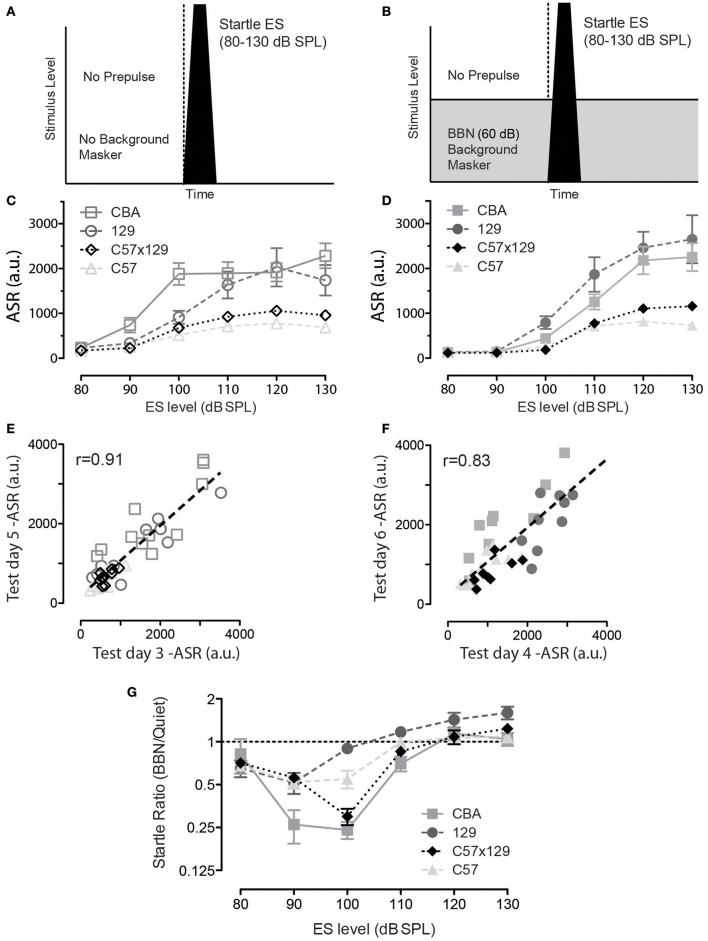Figure 1.
A robust acoustic startle response (ASR) is present in all mouse strains tested, yet varies by sound level, mouse strain, and background noise. (A) Schematic of startle stimulus presented in otherwise quiet background conditions. (B) Schematic of startle stimulus embedded in continuous 60 dB SPL broadband background noise. (C) For each of the four mouse strains tested, the ASR increases with sound level from 80 to 120 dB SPL with near maximal startle elicited in each strain by 120 dB SPL stimulus levels. (D) For each of the four mouse strains tested, at low startle levels, the ASR is reduced compared to when it is delivered in quiet, likely by sensory masking of the startle sound by the background noise; CBA n = 12 animals; 129 n = 12 animals; c57 × 120 n = 12 animals; c57 n = 12 animals. At higher sound levels the ASR increases. (E,F) There is high test/retest reliability for individual mice for both the ASR in quiet (E) and for the ASR in background noise (F), while there may be variability within and between strains. (G) A new metric, the ASR ratio (BBN/quiet) was computed to compare the ASR in noise to the ASR quiet responses. Note that a startle level (ES) of at least 120 dB is needed to ensure and ASR ratio of 1.0 or higher. Error bars are SEMs.

